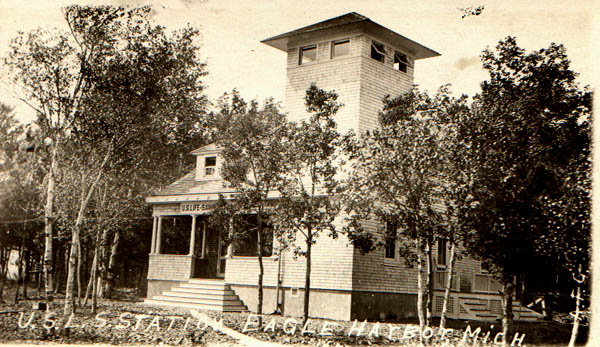
Station Eagle Harbor, Michigan
Coast Guard Station #299
|
Location: |
On east point of
harbor about 1/2 mile east of Eagle Harbor Light. |
|
Date of
Conveyance |
1905 |
|
Station
Built: |
1912 |
|
Fate: |
Turned over to
the GSA in 1954 |
|
Station
Type: |
|
Keepers:
Albert Ocha was appointed keeper on 29
JUL 1912 and died on 22 NOV 1912.
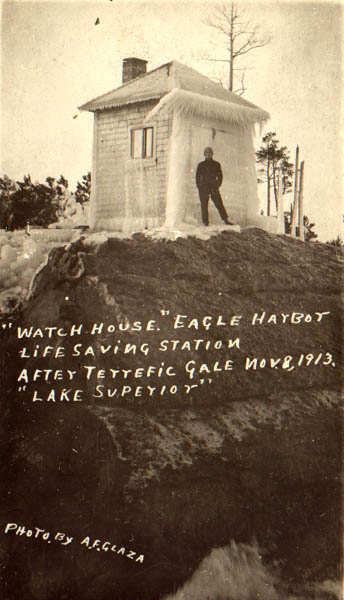
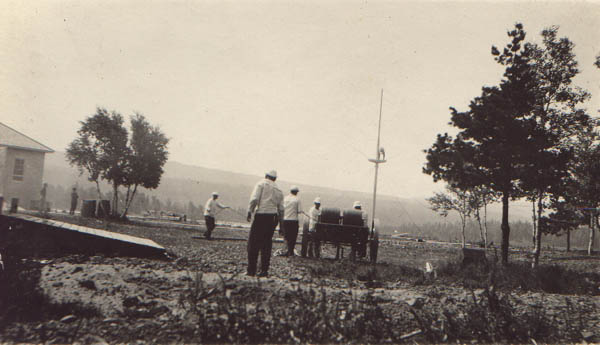
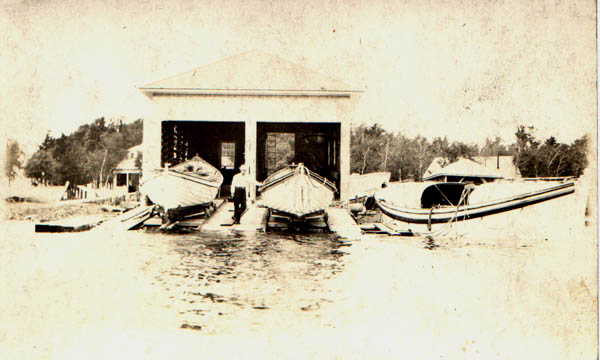
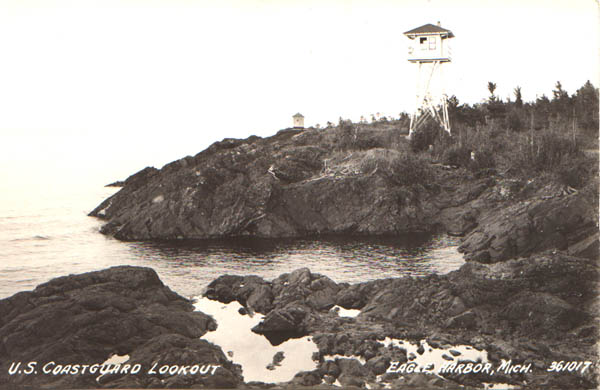
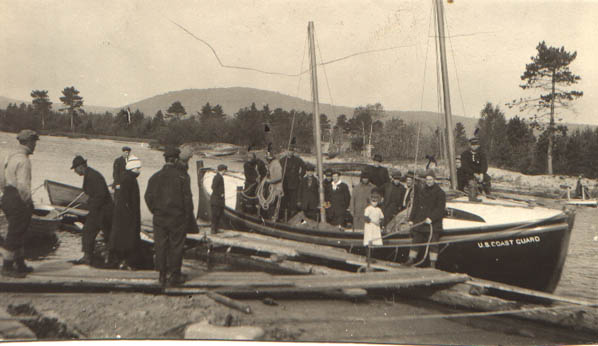 |
|
Charles A. Tucker (G) was appointed
keeper on 14 DEC 1912 and was still serving in 1915. Read below for a
description of his 8 NOV 1913 Gold Lifesaving Medal rescue.
Charles A. Tucker
Anthony F. Glaza
Thomas W. Bennetts
Serge Anderson
John Beck
Chester O. Tucker
George Halpainem
Charles Kumpula
Henry Padberg
Thomas H. McCormick
John McDonald
John C. Alfsen
Fred C. Sollman
Paul Liedtke
Collin S. Westrope
David M. Small
Oscar Marshall
Awarded 15 July 1914
On 8 November 1913 the steamer
Waldo, nearly 5,000 tons, was driven onto Gull Rock, off Keweenaw
Point, Lake Superior. The wind was about 70 miles an hour and the sea very
rough. The vessel broke in two and the imperiled people took shelter in
the cabin, where they remained for 90 hours without food. News of the
wreck reached the Eagle Harbor Life-Saving Station on 9 November and the
crew made a brave effort on that day to reach the vessel in a power
surfboat. After having proceeded 8 miles, the great amount of ice on the
small boat made it impossible to go farther. The boat, therefore, returned
to the station.
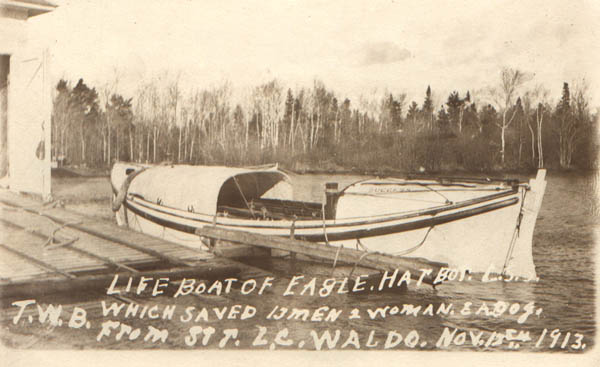
The larger and more powerful lifeboat
was undergoing repairs when word concerning the wreck was received. When
it was found impracticable to effect a rescue with the surfboat, the crew
returned to their task and made it ready to go to sea. The power lifeboat
was launched at 3 AM on 11 November. After four hours of making way in
rough seas and being exposed to the snow and freezing wind, the crew
reached the Waldo, 32 miles from the station.
Information concerning the disaster
was not received at the Portage Life-Saving Station until noon on 10
November. The shortest distance to the wreck was 60 miles, but the keeper,
chose to benefit from the protection afforded by the ship canal to Portage
Entry. By taking this latter route, the distance to the Waldo was
80 miles. The keeper, before starting, coordinated for a tug to meet the
power lifeboat as it emerged from the canal. The tug towed the lifeboat to
the scene of the wreck. They arrived on scene at 3 AM on the 11th.
While the Portage crewmen chopped the
thick ice encasing the Waldoís cabin, the Eagle Harbor crew
arrived. Both lifeboats were ice-logged. This made maneuvering the boats
more difficult and increased the hazard of the rescue. Despite these
difficulties, the lifesavers, in the face of great danger, landed the 22
men and 2 women, all hands, and the shipís dog safely at Houghton, MI.
In awarding the keepers and surfmen a
Gold Lifesaving Medal, the department recognized the good judgment, skill,
and undaunted heroism which stands with the most praiseworthy instances of
bravery in the annals of the service.
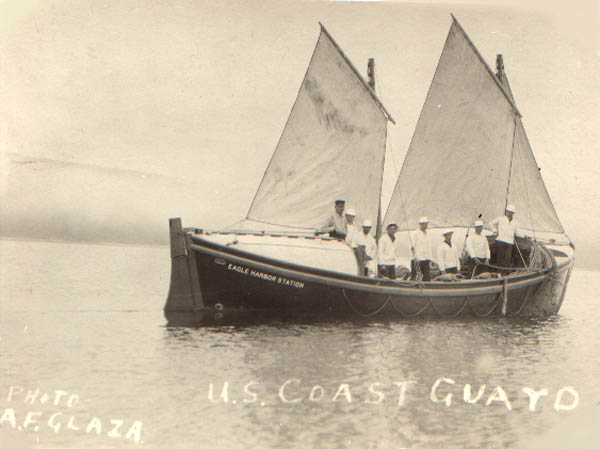
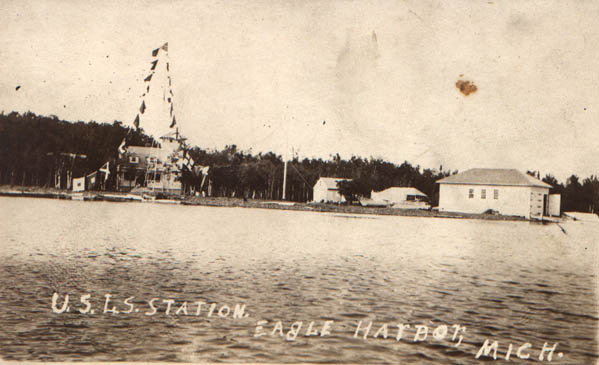
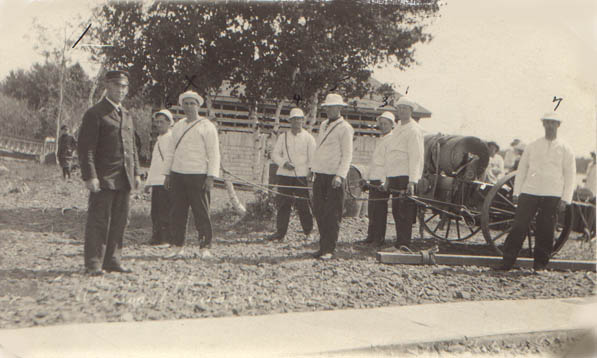
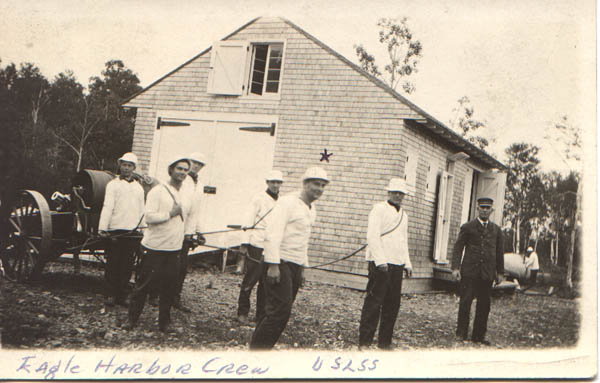 |